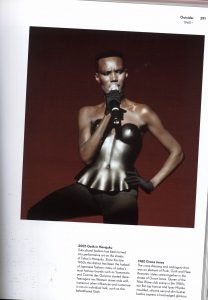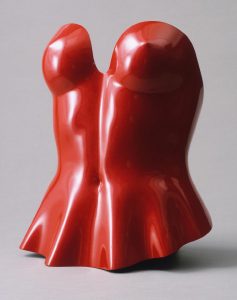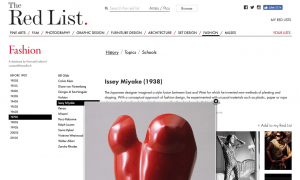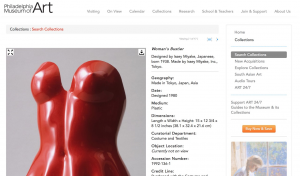Task 1/2
How to use online resources?

Photograph of Grace Jones in 1980, book chapter ‘Outsider’, photographer unknown
Blackman, Cally (2012) 100 Years of Fashion, London

Bustier, 1980, original artefact, Philadelphia Museum of Art, Philadelphia
https://theredlist.com/wiki-2-23-1249-1258-view-1970s-profile-issey-miyake-3.html
I initially chose to focus my research on a photograph of Grace Jones found in my own book ‘100 years of Fashion’ by Cally Blackman. In the photo her androgyny and strong silhouette create a striking image, this is why I chose it. For this reason I originally assumed I would base my research on the sexuality and gender identity of Grace Jones however after spending more time looking at the photograph I found more interest in her androgyny being emphasised by the contrast of her muscular arms and shoulders with the feminine silhouette of the bustier. For this reason I decided to focus my research on the bustier and its designer; Issey Miyake. Using the designers name and keyword ‘bustier’ I quickly found a website named ‘The Red List’ on which there was a range of images of Miyakes work- including a red bustier, similar to that in the original secondary source. While this website did not have any written information it did inform me of an archive in which more knowledge on the bustier could be gathered; the Philadelphia Museum of Art.
The Philadelphia Museum of Art archives were very useful in giving information on Issey Miyake as well as the bustier itself and the concept behind it.
Issey Miyake is a Japanese designer yet received western training . Despite this his designs are described as ‘neither Eastern nor Western’ and instead are said to combine the traditional Japanese emphasis of use of materials with modern technology. His ‘Women’s Bustier’ is an example of this as it was made in collaboration with a mannequin manufacturer (use of technology) and out of plastic (unique material choice).
The bustier was a centrepiece of Miyake’s ‘Bodyworks’ exhibitions that toured in the early 1980’s. In this exhibition Miyake’s study of the body form and garment linking straight back the body. The bustier is playing with the idea that a garments purpose is not to cover the body but to ‘expose a second skin’, allowing more of the wearers personality through rather than disguise it through a clothing barrier. Instead it exposes the wearer more than ever, drawing attention to their real natural body shape, I think this is a metaphor for the exposure of their raw soul.
Another factor I find particularly interesting with his concept and bustier piece is that it seems to be celebratory of the natural voluptuousness of the female body yet this is very uncommon in high fashion (particularly during the 1980’s).
If I were to research this topic further there is valuable information in the digital archives of The Kyoto Costume Insititute and an essay named ‘Miyake, Kawakubo and Yamamoto: Japanese Fashion in the 20th Century’ on The Metropolitan Museum of Art website.
Bibliography:
Blackman, C. (2012). 100 years of menswear. London: Laurence King.
Theredlist.com. (2017). Issey Miyake : Fashion, History. [online] Available at: https://theredlist.com/wiki-2-23-1249-1258-view-1970s-profile-issey-miyake-3.html [Accessed 18 Oct. 2017].
https://www.philamuseum.org/collections/permanent/87018.html?mulR=599653818|1 [Accessed 18 Oct. 2017].


